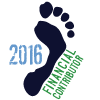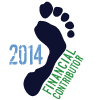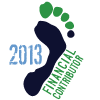I think Nick and Jason highlight an important distinction: what works as a coaching cue, on the one hand, and what is really happening, on the other (this point has been made before, but bears repeating I think). Of course we all push off and lift our feet; otherwise we wouldn't go anywhere. The question is whether it helps a particular individual to consciously think about this. Apparently, for some it does, for some it doesn't. The problem is when someone says 'don't push off' or 'lift your feet' without qualifying it as a coaching cue that may or may not work for a particular runner, which then gives the impression that you can actually run without pushing off or lifting your feet, and can lead to beginners thinking they're doing something wrong if they do/don't.A year and a halfish ago when I started bfr, the lifting the feet concept did not work for me. I could not seem to get it and felt awkward and off and it caused me some issues right out of the gate. What really helped me though was when I figured out not to push off. That was something I felt more in control of. I think it depends on the person though and their interpretation and application of an idea.
You are using an out of date browser. It may not display this or other websites correctly.
You should upgrade or use an alternative browser.
You should upgrade or use an alternative browser.
Lifting Your Feet?
- Thread starter Last Place Jason
- Start date
BG, I was thinking along similar lines. Instead of having these repetitions, perhaps people could summarize their experiences and thoughts somewhere on this site in an area dedicated to this. It might be a good resource for beginners, juniors, and vets alike.
TrialNick, you just proved that there isn't one single solution or technique when it comes to barefoot running. It would be interesting to interview many barefoot runners on what worked for them when they first started.
Error.
Experimentation.
No goals so no fear of failure.
Trial
Error.
Experimentation.
No goals so no fear of failure.
This sums it up right. The master formula for barefoot running.
Seems like most used the foot lift as a teaching tool, then either abandoned it in favor of something else or just stopped doing it. We eventually move toward what makes us most efficient. That would seem to confirm that actively lifting the foot is not metabolically efficient. I would propose that the idea be used when teaching if appropriate, but there doesn't seem to be any basis for using it as a method to run. Anyone disagree?
I happen to agree with that wholeheartedly. Use it to teach, then let the person find their own form once they have all the basics. If they ditch it for something else, more efficient, more comfortable, then that's fine.
Jason,
In the Pose Method of running the cue of lifting the feet/foot is quite valuable and appropriate. However it has to do with specifics of theory and application to running not just a stand alone cue.
In the Pose Method of running the cue of lifting the feet/foot is quite valuable and appropriate. However it has to do with specifics of theory and application to running not just a stand alone cue.
Jeremy- I'd classify the Pose lift as being much different than the lift typically taught by barefoot runners. Correct me if I'm wrong, but the Pose lift lifts the foot with the hamstring at the end of the stance cycle. While I think it's largely unnecessary, it maximizes hip extension. Lifting your foot by lifting the knee is, in my opinion, far worse.
I happen to agree with that wholeheartedly. Use it to teach, then let the person find their own form once they have all the basics. If they ditch it for something else, more efficient, more comfortable, then that's fine.
The tricky part- what if research starts to decipher elements of form that are efficient and some that are inefficient? As teachers, it's our responsibility to continue refining our methodology. If "lifting the foot" is inefficient, it shouldn't be taught universally.
In the end, I think it's up to each of us to fall into a comfortable stride, one that works for us as dictated by our bios. When I was running, my stride looked crappy, but it worked for me and kept me running healthy (wish I could say the same for shoes). It may not have been the most efficient form, but then I wasn't out for efficiency, personally.
I think it's important not to assume error before trail, to borrow from DNEChris's lovely summary. Give proprioception some time before teaching 'the basics.'
Jeremy- I'd classify the Pose lift as being much different than the lift typically taught by barefoot runners. Correct me if I'm wrong, but the Pose lift lifts the foot with the hamstring at the end of the stance cycle. While I think it's largely unnecessary, it maximizes hip extension. Lifting your foot by lifting the knee is, in my opinion, far worse.
I can't speak for the entire bf community in regards to how they define and perform a foot lift. In pose there is only one correct way to lift the foot. The tricky part is there can be varies ways of describing how it works in detail. The body does work synergistically to accomplish the "lift" but major work comes from the hamstring group. Without the hamstring leading the movement the foot will be delayed and the posture of the body won't be properly aligned at the next landing.
NickW
Guest
I have no idea what you just said. Perfect example why this advice did not work for me.I can't speak for the entire bf community in regards to how they define and perform a foot lift. In pose there is only one correct way to lift the foot. The tricky part is there can be varies ways of describing how it works in detail. The body does work synergistically to accomplish the "lift" but major work comes from the hamstring group. Without the hamstring leading the movement the foot will be delayed and the posture of the body won't be properly aligned at the next landing.
What's been working for me lately, as willie mentioned, is letting the upper body, then down to the thighs, be the only things I think about. In fact, I imagine my glutes, quads and hams bringing my legs and presenting them with a place to land, pretending that my lower legs are just dangling there waiting for a chance to set down. When everything is working right, it feels like I'm just gliding along and really don't think about my feet at all (unless I hit a big rock or acorn).
It keeps my lower abs engaged, which keeps my posture upright. It also seems to be helping a lot with hip tiny bouts of IT twinges I used to get but seem to have eliminated, either through cross training or better form, or both.
It keeps my lower abs engaged, which keeps my posture upright. It also seems to be helping a lot with hip tiny bouts of IT twinges I used to get but seem to have eliminated, either through cross training or better form, or both.
I have no idea what you just said. Perfect example why this advice did not work for me.
Understanding is quite necessary to having success. Not just with running technique.
I think that all of these concepts are important and useful, though they may apply differently in people of various backgrounds and and running speeds. For example, when I was trying to drive through the hips, I managed to not lift the feet and was getting more impact. To correct, I conceptualized picking up the knees, and the feet followed. Though, some people probably overdo the idea of picking up the knees or lifting the feet.
I agree that at certain speeds, specific aspects of form may seem more natural and just fall into place. I suspect that at other speeds one has to make a more conscious effort. I think that there is a substantial difference between running and jogging (though I can't really pinpoint the speed which separates the two). The same would apply to the other great running mammal, the horse, whose gait is substantially different when walking, trotting, cantering, and galloping. (Though, I suppose that horses really "just run"!)
I agree that at certain speeds, specific aspects of form may seem more natural and just fall into place. I suspect that at other speeds one has to make a more conscious effort. I think that there is a substantial difference between running and jogging (though I can't really pinpoint the speed which separates the two). The same would apply to the other great running mammal, the horse, whose gait is substantially different when walking, trotting, cantering, and galloping. (Though, I suppose that horses really "just run"!)
not very nice....B&AUnderstanding is quite necessary to having success. Not just with running technique.
understanding is not just dependent on the ability of the person receiving the information but the ability of the person teaching to effectively communicate that information...
Not that I'm accusing you of ineffective communication, its just your comment seemed rather condescending

not very nice....B&A
understanding is not just dependent on the ability of the person receiving the information but the ability of the person teaching to effectively communicate that information...
Not that I'm accusing you of ineffective communication, its just your comment seemed rather condescending
It was not meant in a condescending way at all. The post would apply equally to myself.

































